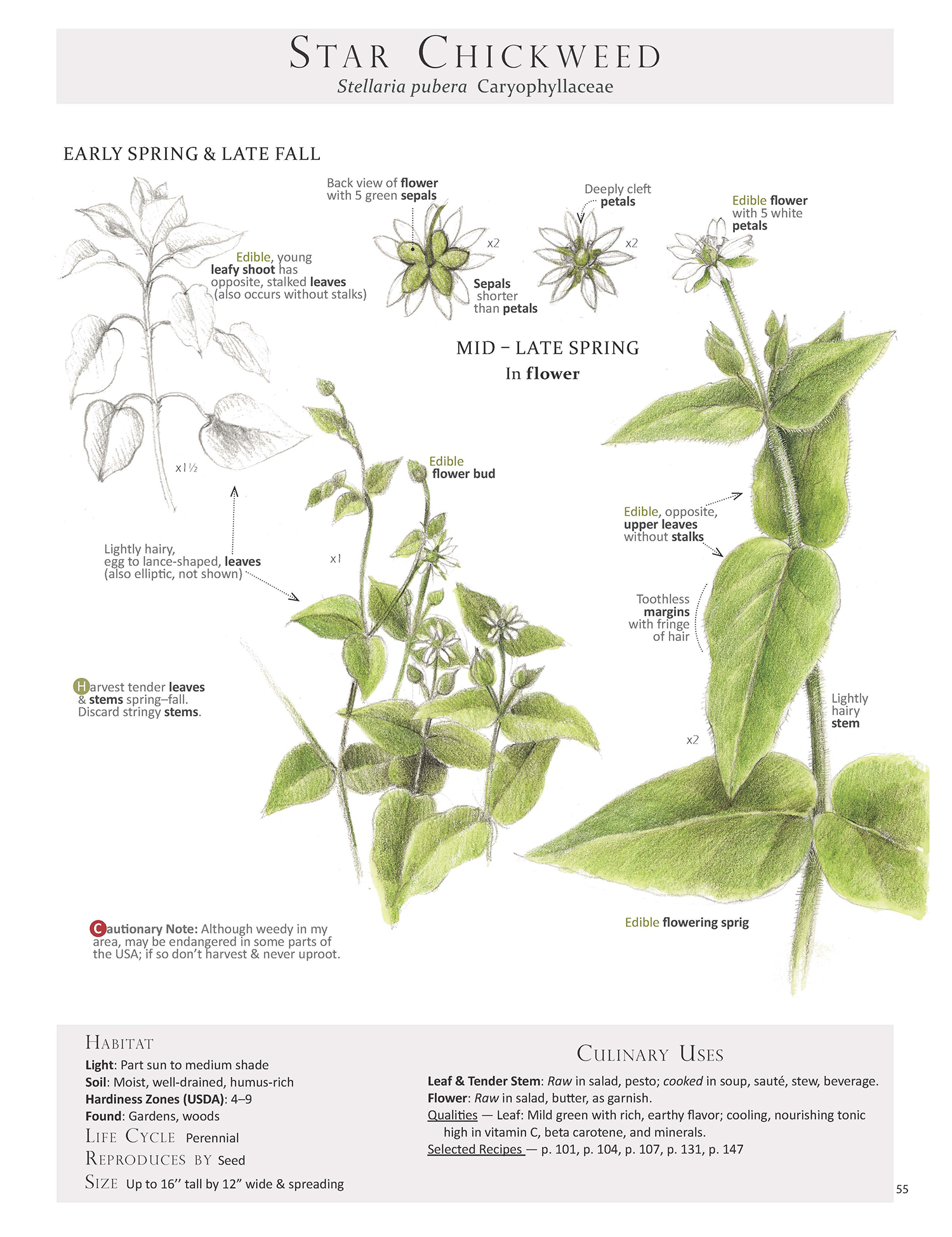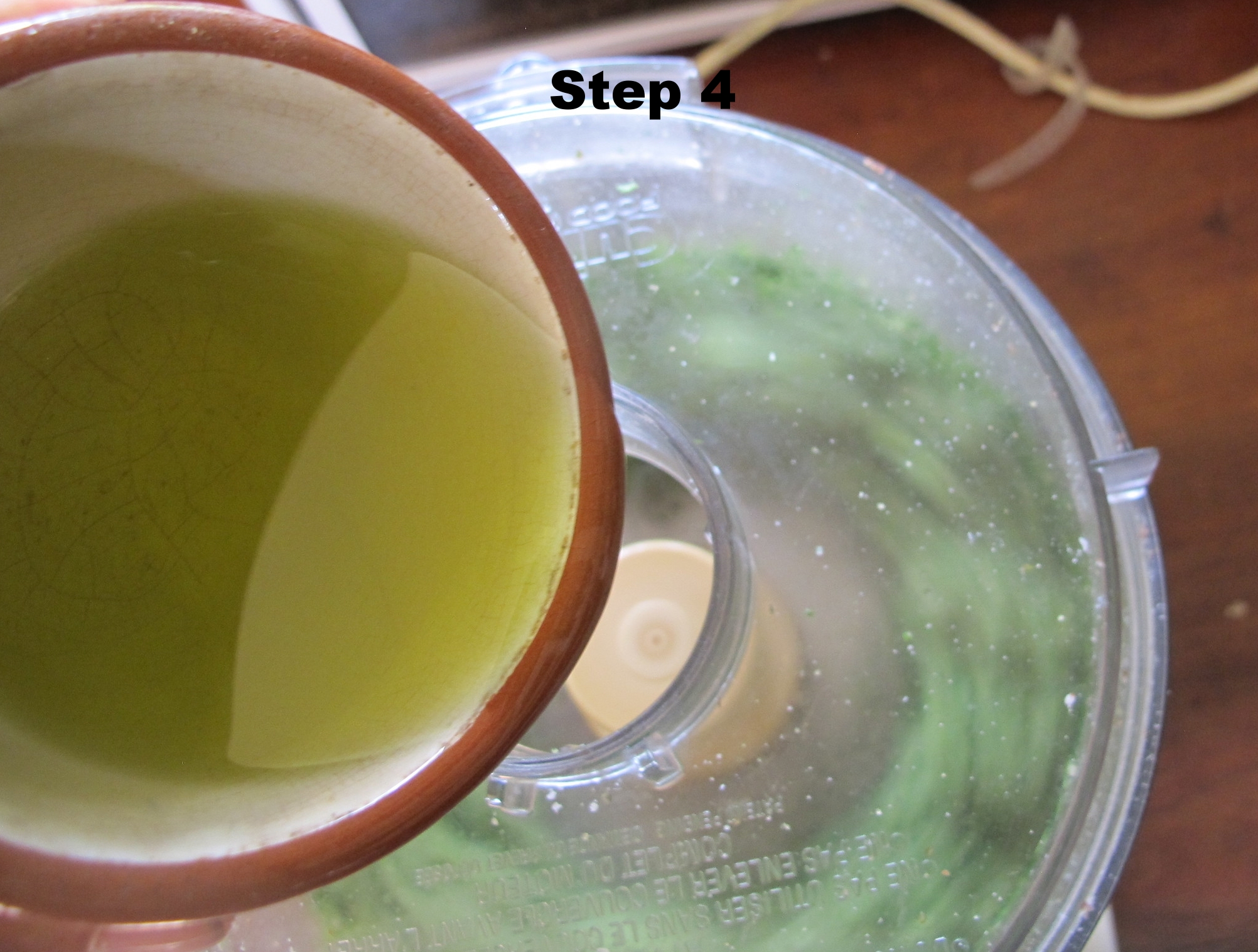Wild Green Pesto Master Recipe Makes about 1 cup
Versatile and nutritious, wild green pesto is a gourmet delight and an herb class favorite. I enjoy serving it as a spread on bread. (In this manner, it was delightfully received as an appetizer at a fundraising dinner which took place in a castle on the Hudson River. I appreciate the humble weeds being honored and bringing in the big bucks.) Pesto, typically added to pasta, tastes great topping whole grains and burgers, and in soups, sauces and dressings. Make it creamy by mixing it with equal parts yogurt, crème fraîcheesh, or heavy cream. In this recipe we can use any wild greens that are eaten raw. While some friends make pesto from only dandelion leaf (very bitter) or nettle (which generally needs cooking to chill out the sting), I suggest using half pungent, aromatic plants and half milder tasting ones. If adding bitter flavored plants, include small amounts — about one-half cup per batch. Please note: I usually triple this recipe, multiplying all the ingredients by three.
Today's Wild Green Pesto features wood sorrel (Oxalis stricta), garlic mustard (Alliaria petiolata), wild bergamot (Monarda fistulosa), star chickweed (Stellaria pubera), soaked and dried sunflower seeds and almonds, and pecorino fulvi sheep cheese as displayed in this photo.
- 2 oz (by weight) hard grating cheese such as Pecorino Romano or Parmigiano, cut into chunks (fills about ½ cup)
- ½ cup nut or seed (preferably soaked and dried, see earlier blog post here); some good choices are sunflower seeds, green pumpkin seeds, hazelnuts, almonds, pecans, and pine nuts
- 1–2 cloves garlic (less garlic is used than typical pesto recipes so you can taste the flavor of the herbs)
- 3 cups packed wild greens (edible raw) of choice; if leaves are large, coarsely chop
- 1/3–3/4 cup cold-pressed olive oil
- Sea salt to taste
- Place cheese in food processor and process until well pulverized.
- Add nut or seed and garlic and process until medium-fine ground.
- Add wild greens and process until mixture is well minced.
- With food processor running, add olive oil until the desired consistency is reached. 1/3 cup oil produces a thicker consistency — nice for spreading on bread, crackers, etc. For a thinner, looser sauce add another ¼–½ cup of oil.
- Taste first, then add salt if desired.
Wild Green Variations: Here are some good plant combinations for making wild green pesto:
- 1½ cups violet leaf, 1 cup wild bergamot leaf, ½ cup garlic mustard leaf or flowering top
- 1½ cups wood sorrel leaf & tender stem, 1 cup star chickweed leaf & tender stem, ½ cup bee balm leaf
- 1¾ cups sheep sorrel leaf and tender stem, 1 cup dayflower leaf and tender stem, ¼ cup gill-over-the-ground leaf and tender stem (can include flower too).
- 1½ cups day lily shoots, 1¼ cups field onion greens, ¼ cup garlic mustard leaves. This combination is available only in early spring.
Garden Variations: Here are some good plant combinations for making “tame” green pesto:
- 1½ cups arugula, 1 cup parsley, ½ cup watercress
- 1½ cups French sorrel leaf, 1 cup chervil, ½ cup hardy marjoram
Cultivated Additions: Of course pesto is most commonly made with basil, but other cultivated plants work surprisingly well and taste great mixed with wild plants. Try adding ½ cup of leaves of the following fresh culinary herbs per batch of wild green pesto:
Winter or summer savory, oregano, thyme, sweet or perennial hardy marjoram, tarragon, or cilantro
Wild Green Pesto ready to eat spread on cucumber slices and sprinkled with wild bergamot flowers (Monarda fistulosa).
Plant identification pages and recipe from Foraging & Feasting: A Field Guide and Wild Food Cookbook by (me) Dina Falconi; illustrated by Wendy Hollender. Book link: http://bit.ly/1Auh44Q










